Jade Tree Care – How To Take Care of Jade Plant & Maintain It
Jade plants enjoy bright indirect light and slightly acidic soil that drains well. They are not very demanding, but one thing you must take care of is the temperature. They do not like cold and prefer warmer zones to flourish.
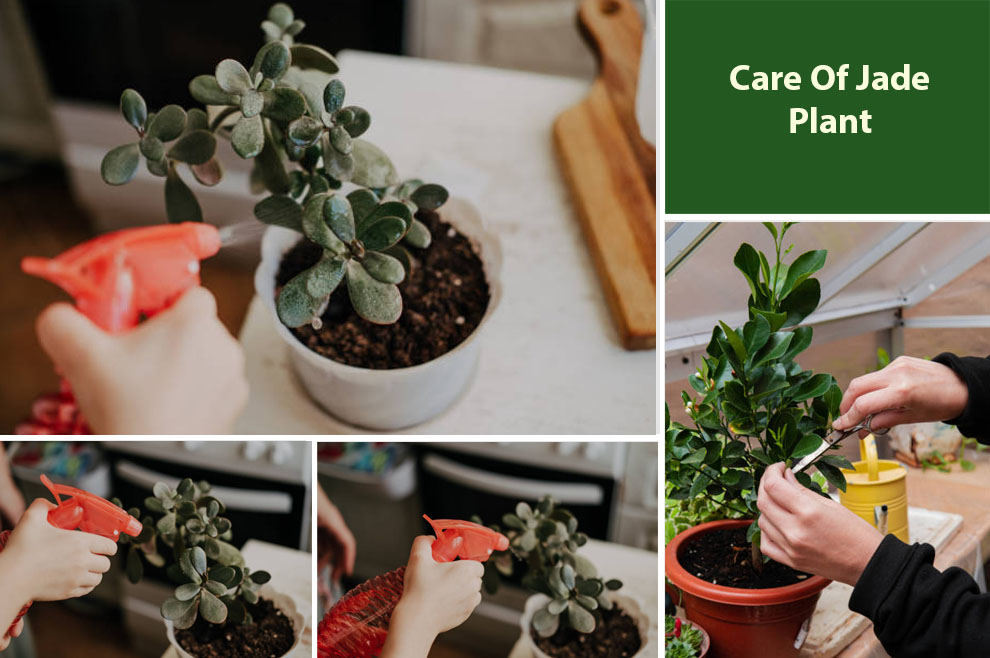
Jade plants are an absolute example of class and quality. They are a popular succulent plant among homeowners. Not just this, these plants are often preferred as housewarming gifts because they are known to attract prosperity, good luck, and wealth.
Jade plants also titled money plants were originally found in regions of southern Africa. Their striking features like thick and oval-shaped leaves with woody stems make them the perfect ornamental plant choice.
Knowing how to take care of jade plants is imperative to preserve them for many years. Whether you grow them in a container or outside in a garden, these plants generally don’t demand much attention. However, you need to be careful about providing them with a suitable growing space.
Just with a few easy care tips, your plant can grow about 3 to 6 feet in height effortlessly. However, it is a slow-growing plant that gains about 2 inches every year, so don’t expect quick results.
So, first and foremost, don’t ever overwater your jade plant as it can be fatal for their growth. Also, make sure they get enough sunlight. These trees prefer to grow in normal household temperatures falling between 55 – 75 degrees Fahrenheit. They completely deter cold climates.
Jade Tree Care Guide
Jade plant varieties are beautiful succulents that appear like tiny trees. You can use them as stunning decorative houseplants. With the right care and maintenance, these plants can survive for a long time and can be gifted from one generation to another generation.
Before you decide to place a jade tree in your home, check out this easy guide for caring them properly.
A. Jade plant pot size
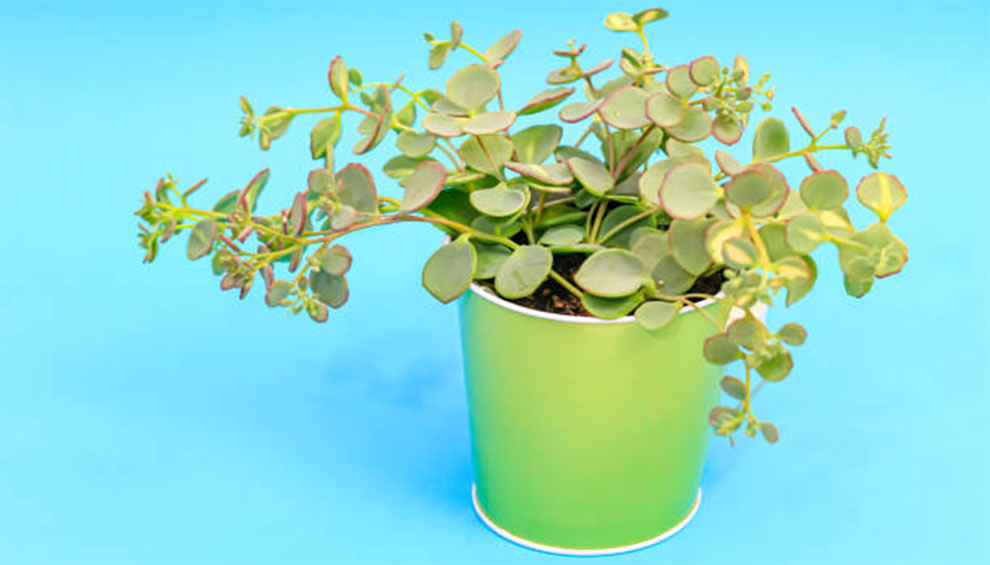
A jade plant generally requires unglazed clay pots or terracotta pots with large drainage holes at the bottom. The pot size should be greater than the size of the plant by an inch or two. These pots promote healthy growth by allowing the evaporation of extra moisture from walls and saving the plant from waterlogging stress.
B. Best jade plant soil
Jade trees can develop in any type of soil with neutral to somewhat acidic pH levels. You should typically focus on the fact that the soil you use drains extra moisture. Consider adding some perlite to the potting mix or simply use an all-purpose potting mix to avoid the accumulation of moisture.
This will also keep your plant safe from getting any fungal growth.
C. Jade plant watering schedule
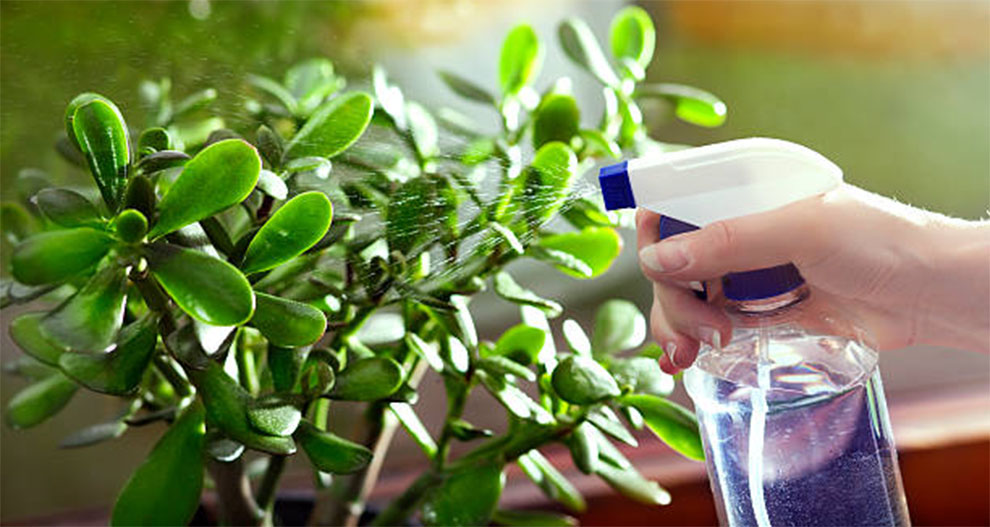
Jade plant owners must know the correct watering routine for optimal jade tree care. For the most effective growth in the summer and spring seasons, you should water your jade plants until it’s perfectly moist.
Never keep your plant soil too wet as it can directly lead to waterlogging. For this reason, make sure you have an immaculate drainage system for healthy jade growth. It’s best to water your plants at least once a month during the winter season.
If you use a saucer to collect excess water from the jade vessel, don’t forget to drain it immediately.
D. Jade plant light requirements
When planting a jade plant in your house, make sure it receives a lot of sunlight. It is very important when it comes to taking care of jade plants to prolong their life.
On the flip side, avoid placing your jade plants in direct sun exposure, particularly when it’s young. Otherwise, it can burn your plant leaves. However, if your place is under very light sun exposure, it can weaken the growth of your jade plant.
Ideally, you should keep your plant in indirect bright sunlight for at least 6 hours every day. For this reason, it is considered best to place your plant near a west-facing or south-facing window to get ideal sunlight.
E. Growing temperature range for Jade
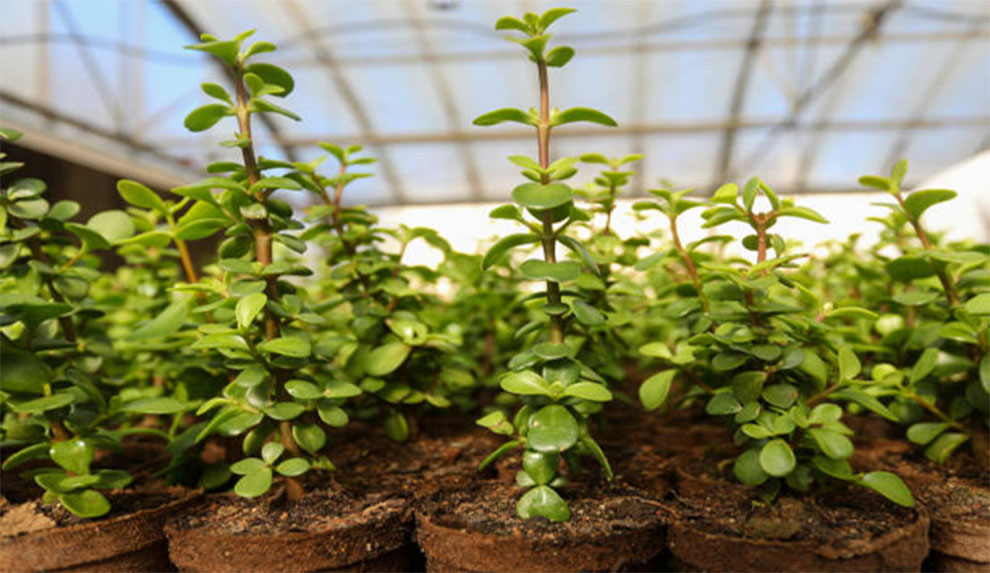
Because jade plants can easily grow in household temperatures, you can plant them with temperatures varying between 65 to 75°F. They can tolerate cooler surroundings in winter and at night, with a temperature drop to 55 degrees Fahrenheit.
However, you should avoid keeping your jade plants in an environment with temperatures down to 50°F or below.
F. Jade plant fertilizer needs
Another important aspect of jade tree care involves meeting the fertilizer requirements of plants. If you want your plant to grow without any trouble, apply quality fertilizer while controlling its release. It’s perfect for these succulents at the beginning of the growing season.
Additionally, you can also use a weak liquid solution for good plant growth. For young jade plants, apply quality fertilizers that are low in content of nitrogen. When it comes to mature jade succulents, feed them with a balanced fertilizer ratio of 20-20-20 in one-fourth strength.
G. Jade plant pruning requirements
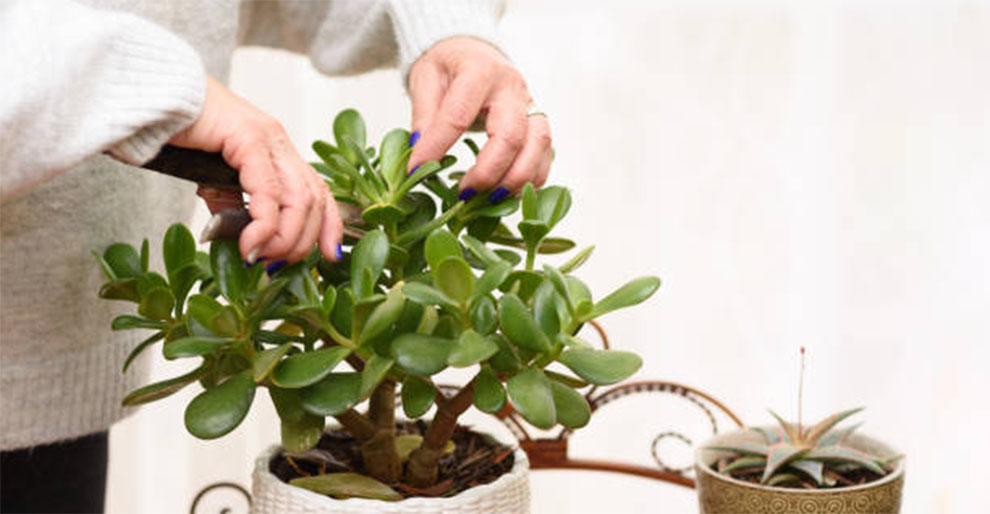
Pruning your jade plant can be good practice for many reasons while taking care of jade plants. For instance, effective propagation, prevention of pest infestation or disease, thicker trunk, and densely growing leaves.
In case your plant is suffering from any disease or pest infestation, you should consider pruning it without any delay.
Some common problems that might be troubling your jade plant include the absence of dense foliage or irregular growth. If you desire to grow a jade plant as a bonsai, it will require to be pruned. You can also cut its parts and save them for successful jade propagation in water or soil.
Fortunately, pruning jade succulents will encourage regular growth to get a particular form or shape. So, you can think about pruning it throughout the year, particularly during the spring season. Additionally, you can prune your money plant once it stops flowering to avoid chopping off any flowerheads.
H. Repotting jade plant
Typically, you will need to repot your young jade plant every 2 to 3 years. Whereas mature and larger jade plants should be repotted every 4 to 5 years. This particular goes for succulents that outgrow their vessel.
For example, if your succulent roots are coming upwards from the soil, consider repotting it to a larger and more spacious container.
When throwing some light on jade tree care tips, you should take care to use a suitable vessel. This goes for unglazed clay containers which will allow the evaporation of extra moisture out of its walls. This will ensure that your plant soil doesn’t accumulate too much water.
I. Saving your jade plant from pests and diseases
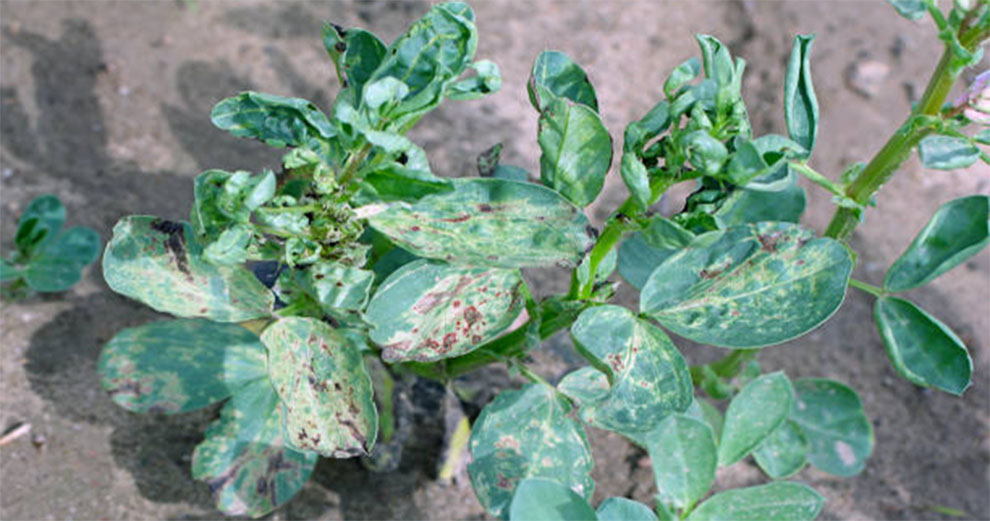
When most people think about how to take care of jade plants, they should know about saving them from diseases and pest attacks. It is a very important aspect to improve the longevity of these stunning succulents.
Most commonly jade plants get attacked by pests like mealybug. You can spot it with the formation of white, cotton-like patches on the places where the leaf connects with stems. These bugs also infect plant tissues piercing through them to eat the plant sap. A common indication of this infection includes the secretion of an adhesive substance such as honeydew.
Don’t use harsh insecticides to control infections caused by mealybugs or other pests attacking jade plants. It can severely damage the foliage of your succulent. Therefore, it is best to use soaked Q-tips or cotton balls rubbed with alcohol to get rid of any damage from mealybugs.
Beware of other common pest attacks on your jade plant. This goes for flecks or chlorotic patches on jade foliage caused by spider mites. You can easily get rid of these spots using cotton dipped in rubbing alcohol (about 70%).
Avoid using oils and horticultural soaps to treat these pest attacks. In cases when your jade plant is poorly infected by other pests like aphids or scales, it is recommended to simply get rid of it.
Jade Plant Indoor or Outdoor – Where Should I Keep It?
Whether you place it indoors or outdoors, you will need to follow the correct jade plant care tips. But, Jade plants are better kept indoors. Being popular as low-maintenance succulents, jade plants can successfully thrive throughout the year in hotter areas.
Generally, it’s easier to care for young jade plants when placed indoors in a clay or terracotta vessel. It is recommended to put them in a place that receives full sun exposure indirectly. This is important so your plant doesn’t have scorched leaves.
Even though the jade plant is commonly used as an indoor plant, you can also grow it as an evergreen perennial shrub. These can be primarily grown in warmer areas with a temperature of 65 to 75 degrees Fahrenheit during the day and 50 to 55 degrees Fahrenheit at night.
How Is Jade Plant Care Indoors Different From How You Take Care Of Jade Plants Outdoors?
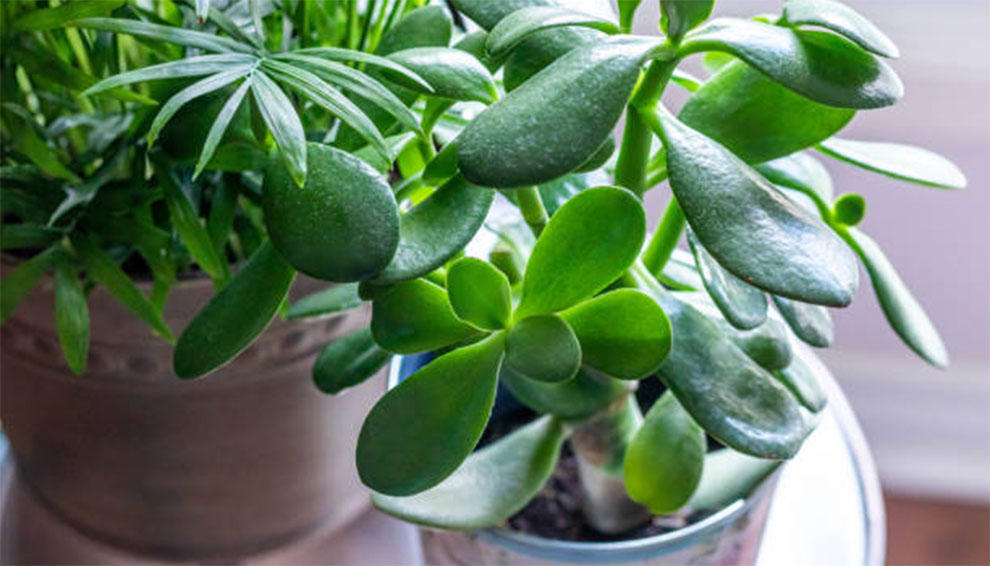
Young jade plants can be easily grown indoors and outdoors throughout the year. However, you will need to look after jade plant maintenance effectively. As far as caring for them is concerned, just take care to bring your succulent inside during winter when the temperature drops down to 50 degrees Fahrenheit.
When placed indoors, make sure to put your plant in an area that gets ample sunlight. Otherwise, these plants can easily thrive in any environment with temperature ranges of 65 and 75 degrees Fahrenheit.
Likewise, jade plants prefer to grow in slightly moist soils. You will need to pour little water on outdoor plants as their plump leaves store sufficient water. If you live in an area that often receives rain, make sure to place your succulent indoors. If not, your plant might develop root rotting or fungal growth due to excessive rainfall.
FAQs
Q. Where should you place a jade plant in your house?
Ans. It is encouraged to place your jade plant in indirect and bright sunlight in your house. Usually, areas having windows facing in the south direction and western direction are perfect places to keep jade plants.
Q. Should I mist my jade plants?
Ans. It is a great idea to mist your jade plant only during colder months. It is so because the winter care guide for jade plants emphasizes that during winter months you should not completely water a jade.
However, you can fully water it in the summertime. Don’t forget to place it in a spacious pot with drainage holes so that excess water doesn’t clog your plant roots.
Q. Why are my jade leaves falling off?
Ans. If you notice that your jade leaves are yellowing or falling off quickly, you might not be watering them properly. Make sure to pour sufficient water into your plant. The best time to water a jade plant is when you notice that the upper layer of the soil (2.5 cm from the top) is completely dried out.
Q. How long does a jade plant live?
Ans. Jade plants are highly famous for their long lifespan. If you give them the right care and maintenance, they can live happily for as many as 50 to 70 years. Sometimes longevity can expand more when the plant receives ideal surroundings.
To Conclude – Is Jade Plant Low Maintenance?
Overall, jade plant maintenance does not need much effort. They are a perfect option for anyone who is looking to grow a low-maintenance plant. Often said difficult to kill, jade plants can live for a long time. This is the common reason why jade plants are often passed from generation to generation as gifts.
Just take care to fulfill the needs of these stunning plants so they don’t get attacked by any pests or diseases and get the nutrition they need to grow.
